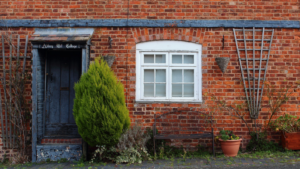Rising Damp UK Rental Homes
In recent years, an alarming rise in the number of children living in damp rental homes has been reported across the UK. This issue has garnered significant attention due to its severe implications for health, particularly among young children. But what are the root causes, and what steps can be taken to mitigate this growing crisis? This article delves into the complexities surrounding damp rental homes, exploring the latest figures, health impacts, and potential solutions.
The Scope of the Problem
Recent data reveals that approximately 1.6 million children in England are living in privately rented homes plagued by damp, mould, or excessive cold conditions. The prevalence of dampness is notably higher in private rental properties compared to owner-occupied or social housing. Statistics show that 11% of dwellings in the private rental sector have significant damp issues.
The crisis is exacerbated by the cost-of-living increases, which have made it difficult for many families to afford adequate heating. Nearly 60% of renters with children report experiencing issues related to damp and mould. This has led to severe health consequences, particularly among vulnerable populations such as babies and young children.
Health Implications
Living in damp conditions poses serious health risks. Damp and mould exposure can lead to respiratory problems, allergies, asthma, and other health issues. According to health experts, children living in damp homes are nearly three times more likely to suffer from breathing problems.
For instance, Laurie, a single parent, shared her distressing experience of dealing with mould and damp in her rented home. Her two young sons suffered from frequent chest infections, necessitating hospital visits. This scenario is not uncommon, as damp conditions significantly contribute to respiratory ailments, particularly in children under two years old.

Factors Contributing to Damp Conditions
Several factors contribute to the prevalence of damp in rental properties:
- Poor Insulation: Many rental homes are poorly insulated, leading to increased moisture and dampness. This not only affects the living conditions but also results in higher energy bills for tenants.
- Inadequate Ventilation: Lack of proper ventilation is a significant issue. Properties with sealed windows to improve energy efficiency often fail to allow sufficient airflow, leading to condensation and damp problems.
- Structural Issues: Older buildings, common in the private rental sector, often suffer from structural problems like rising and penetrating damp. These issues are typically the landlord’s responsibility to fix but often go unaddressed.
- Tenant Practices: Sometimes, tenant behaviours contribute to damp conditions. For instance, drying clothes indoors without proper ventilation can exacerbate damp and mould issues. However, tenants often resort to such practices due to a lack of affordable heating options.
Tenant and Landlord Responsibilities
The responsibility for managing damp and mould in rented properties is shared between tenants and landlords:
- Landlord Responsibilities: Landlords are generally responsible for fixing structural issues that cause damp, such as rising damp and penetrating damp. They are also required to ensure that properties meet basic living standards, including adequate insulation and ventilation.
- Tenant Responsibilities: Tenants need to manage condensation damp by ensuring proper ventilation and not blocking ventilation systems. They should report any damp issues promptly to their landlords to facilitate timely repairs.
Despite these shared responsibilities, many tenants report difficulties in getting landlords to address damp issues effectively. This often leads to prolonged exposure to unhealthy living conditions, impacting their health and well-being.
Policy and Legislative Responses
The rising concern over damp rental homes has led to calls for stricter regulations. The introduction of Awaab’s Law, following the tragic death of two-year-old Awaab Ishak due to mould exposure, mandates that social landlords address damp and mould issues within strict timeframes. However, similar regulations for private rentals are still lagging.
Citizens Advice has urged the government to align regulations for private rentals with those for social housing, including stricter energy efficiency standards and higher caps on landlord investments in property improvements. This could ensure that rental properties are brought up to a minimum Energy Performance Certificate (EPC) rating of C by 2025 for new tenancies and by 2028 for existing ones.
The current cap on landlord investment for necessary improvements is set at £3,500, which many argue is insufficient. Increasing this cap to £10,000 could significantly improve living conditions in rental properties and reduce the prevalence of damp and mould.
Conclusion
The issue of damp rental homes is a multifaceted problem that requires coordinated efforts from both landlords and tenants, alongside stringent regulatory measures. Ensuring that rental properties are well-insulated, properly ventilated, and free from structural damp issues is essential for safeguarding the health and well-being of residents, particularly young children.
Addressing this issue will not only improve health outcomes but also enhance the overall quality of life for millions of families living in rented homes across the UK
ARE YOU READY TO START INVESTING?
Subscribe to our mailing list now for exclusive deals, investment guides and the latest information from the property market.







